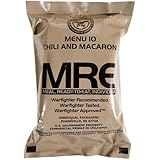The Best Ways to Store Water for Long-Term Preparedness
Table of Contents
1. Selection of Proper Storage Containers
2. The Importance of Water Purification
3. Proper Storage Locations and Conditions
4. Regular Check-ups and Rotation Practices
1. Selection of Proper Storage Containers
Choosing the Right Material for Water Containers
Choosing the right material for your water container goes a long way in ensuring that your water does not become contaminated. While glass containers may be popular due to their imperviousness to chemicals, plastic containers, particularly food-grade, have been preferred by many due to their lightweight and unbreakable nature.
However, it’s not just any plastic container. We are talking about food-grade containers. Imagine that friend who always has your back. That’s the kind of trust you need when selecting your water containers. Yes, they need to be food-grade containers, specifically BPA-free, to ensure they don’t leech any chemicals into your water over time.
Moreover, consider the size and shape of your containers. Stuffing a big, circular water barrel in the corner of your basement may not be the most space-efficient method. Instead, consider long, flat containers that can be tucked away under the bed or in closets. It’s like getting the perfect fitting pair of jeans – comfortable and right for the space.
== > What if ... Get a FREE Subscription to PREPARE
Sealing Your Water Containers Properly
Sealing your water container is like locking your home – it keeps the good stuff in and the bad stuff out. After filling your container, it is imperative to securely seal it, protecting the water from bacteria, insects, and algae.
I remember this one time I thought I was all set with my water storage. I’d followed all the rules, or so I thought. Guess what? I had not sealed my containers properly. Imagine waking up to find the treasure trove compromised. That’s a mistake I wouldn’t wish on anyone.
Lessons learned, I can confidently advise you to choose containers with high-quality caps. The idea is to ensure an airtight seal. If your container doesn’t come equipped with one, consider using bungs or gaskets. You got this pal, seal it right, seal it tight!
Maintaining Clean Storage Containers
As important as it is to have your water, it’s equally important to keep your storage containers clean. No one wants a sip of murky water, right?
Remember, your containers will need regular cleaning, and I’m not talking about just a rinse under the tap. Instead, think of cleaning your water container like preparing a meal for your crush. You need to scrub and sanitize using a diluted bleach solution about every six months.
A clean container ensures the longevity of your stored water. Cleanliness is not next to godliness for no reason, mate!






